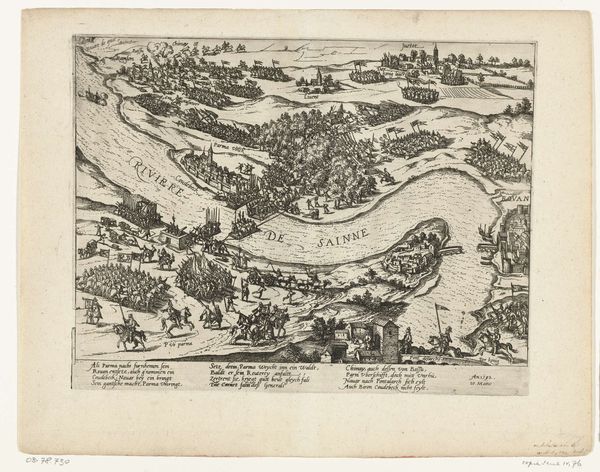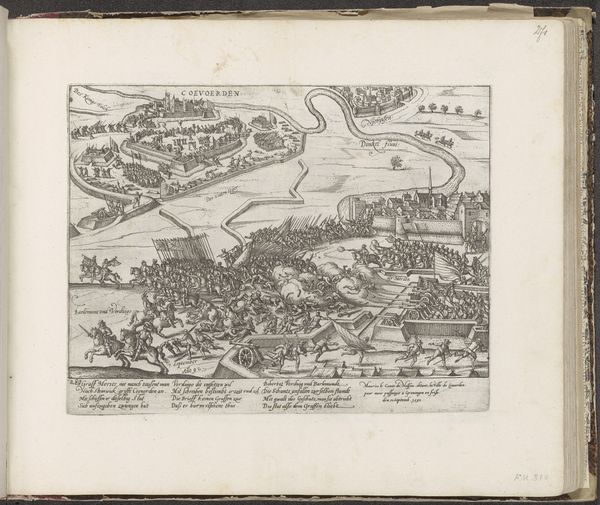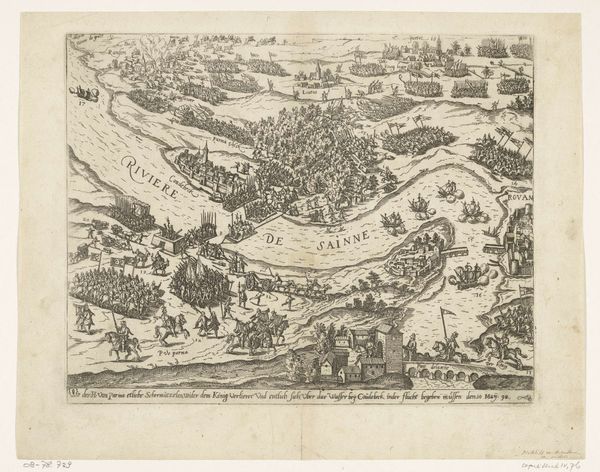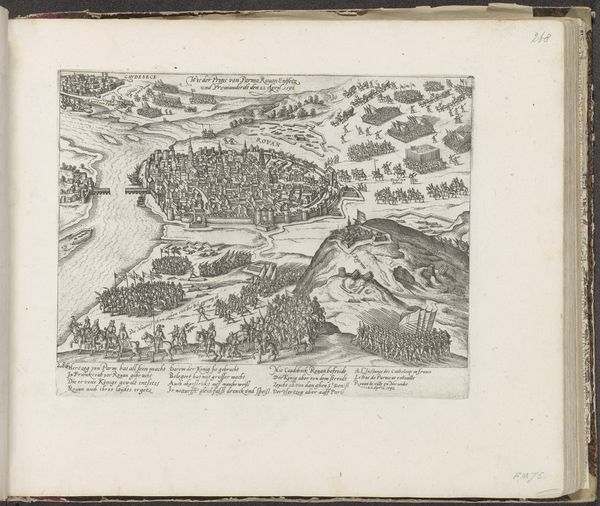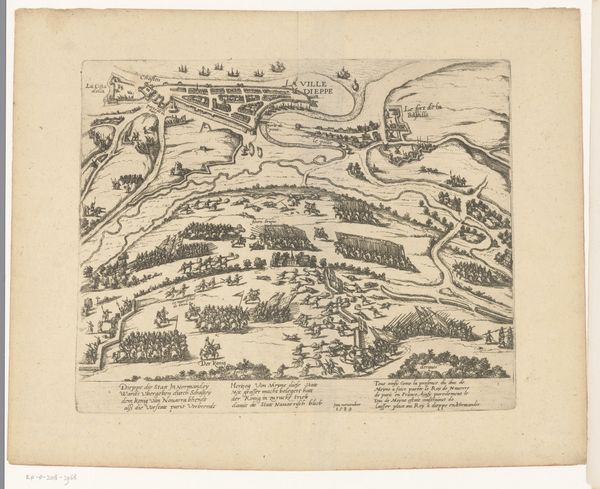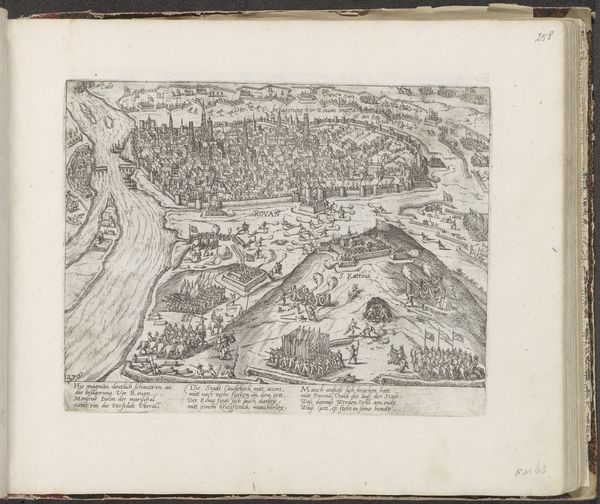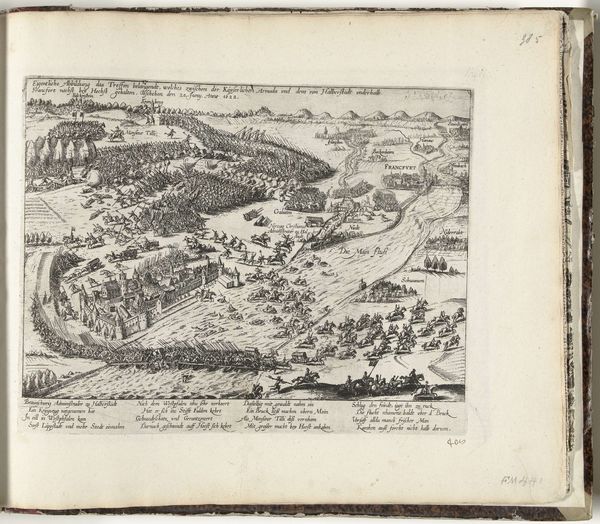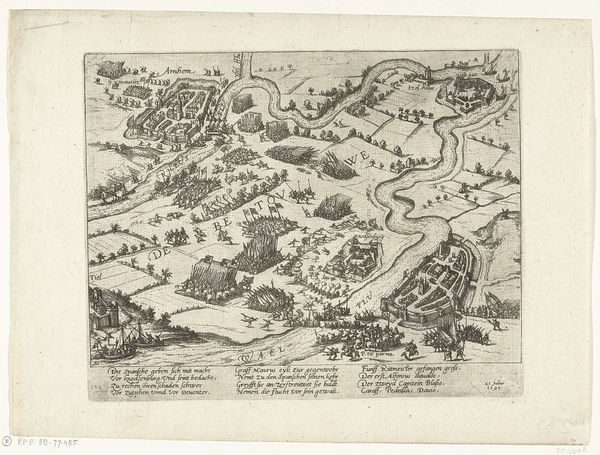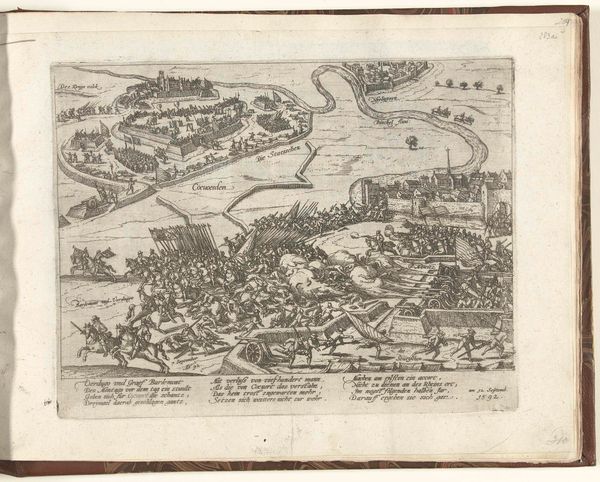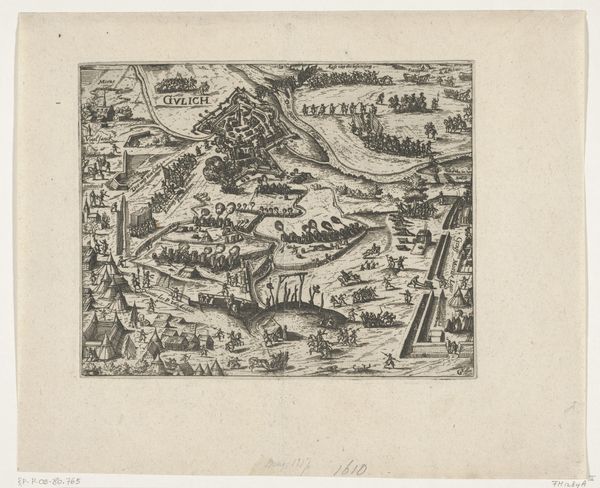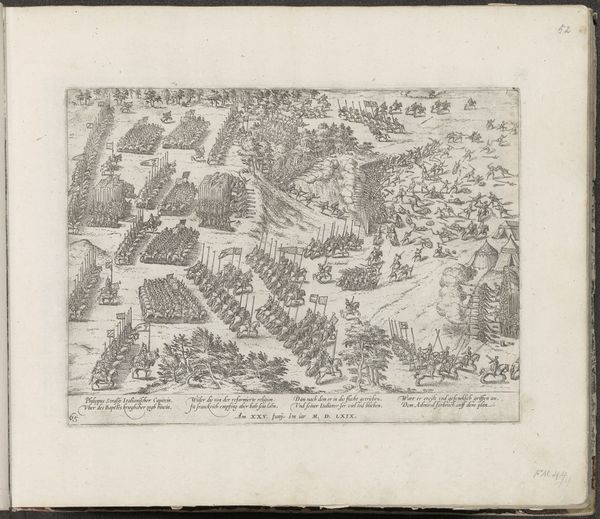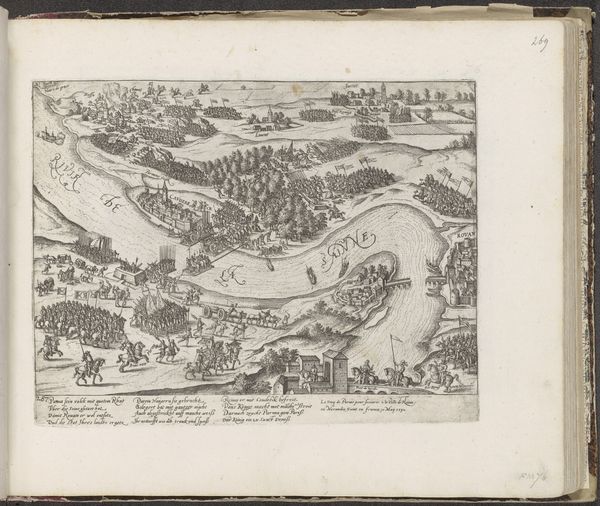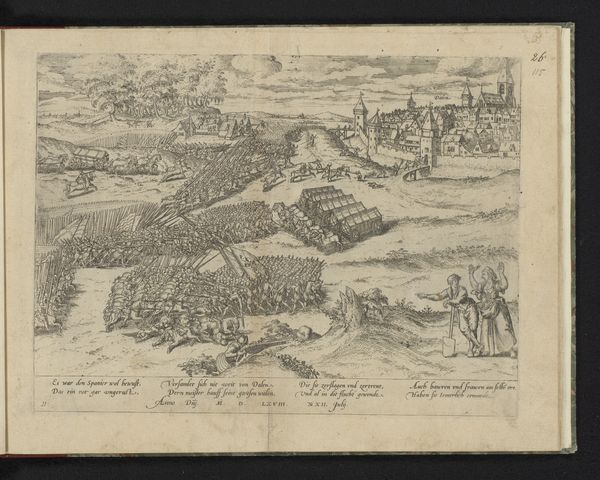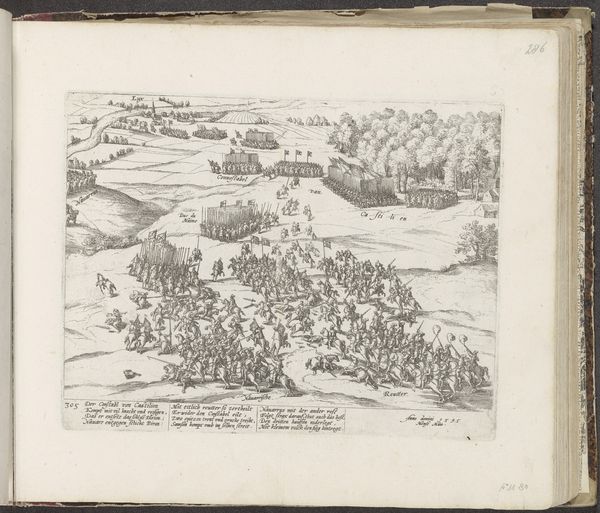
print, etching, engraving
# print
#
etching
#
11_renaissance
#
cityscape
#
history-painting
#
engraving
Dimensions: height 204 mm, width 268 mm
Copyright: Rijks Museum: Open Domain
Editor: Here we have "Rouen door de hertog van Parma ontzet, 1592" by Frans Hogenberg, made sometime between 1592 and 1594. It's an etching, an engraving, a print, and it depicts quite a dramatic cityscape! All the little figures create such a tense atmosphere. What’s your interpretation of this work? Curator: The tension you observe really speaks to the historical context. Hogenberg's image portrays a specific event: the Duke of Parma relieving Rouen. But more than just a historical record, it functions as political propaganda, showcasing power during a tumultuous period of religious conflict between Catholics and Protestants. Editor: Propaganda, really? I guess the figures lining up, so organized, seem to show one side as very powerful. Curator: Precisely. Think about whose story is being told here, and who isn’t. The composition—the Duke's forces prominently displayed, the walled city almost encircled—suggests control and dominance. Who benefits from that particular narrative and what is its potential effect on people at the time and now? Editor: That makes a lot of sense. I hadn't considered the perspective so deliberately. Curator: And what about the city itself, depicted with such detail? The architectural representation does more than map a space. Consider how the city's identity and inhabitants are being framed in relation to this external military force. Are they active participants in their own history, or merely objects of it? Editor: I think it raises uncomfortable questions about how history is written—or in this case, drawn—by the victors. Curator: Exactly. Looking at this piece through a contemporary lens challenges us to examine the power dynamics inherent in historical representation. What does it mean to depict war, conflict, and victory? And how do we critically engage with images that were designed to shape public opinion? Editor: Wow, I see so many more layers now. It's more than just a cityscape; it’s a powerful statement, selectively constructed. Curator: Indeed. Analyzing its visual rhetoric allows us to unpack its underlying ideologies. And reminds us that we need to look critically at images of power, past and present.
Comments
No comments
Be the first to comment and join the conversation on the ultimate creative platform.
